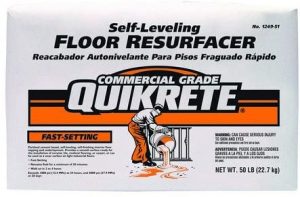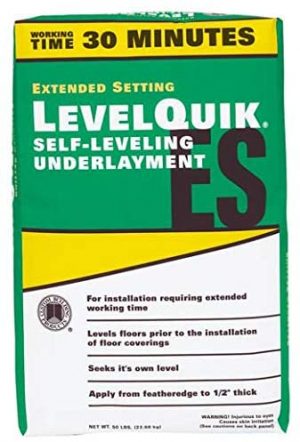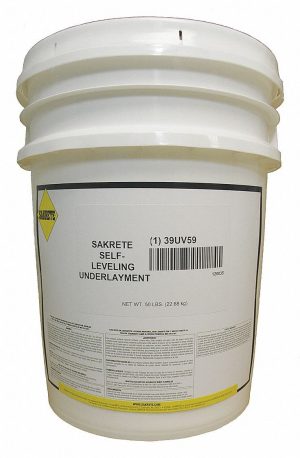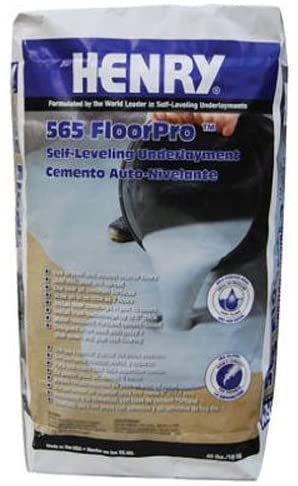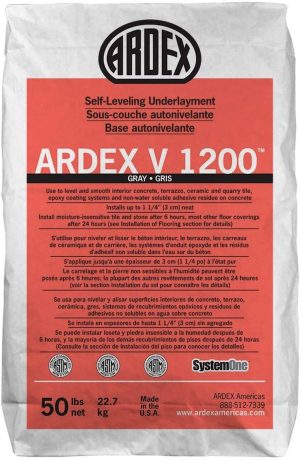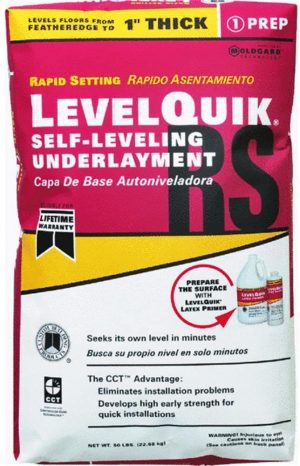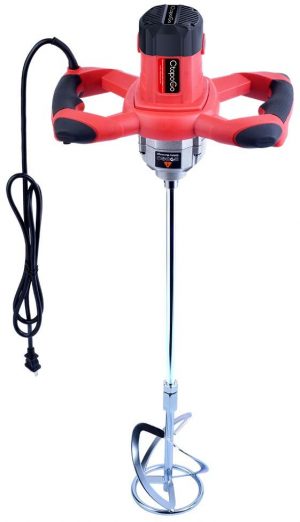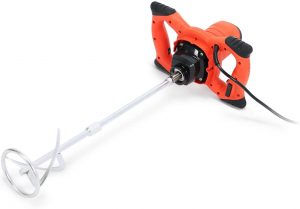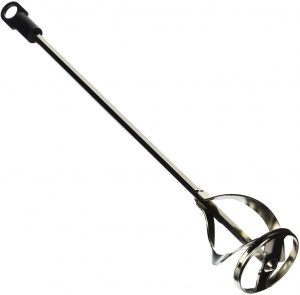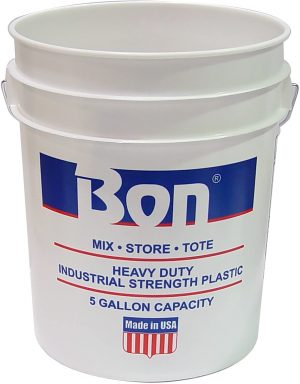The Best Concrete Self Leveler for 2026
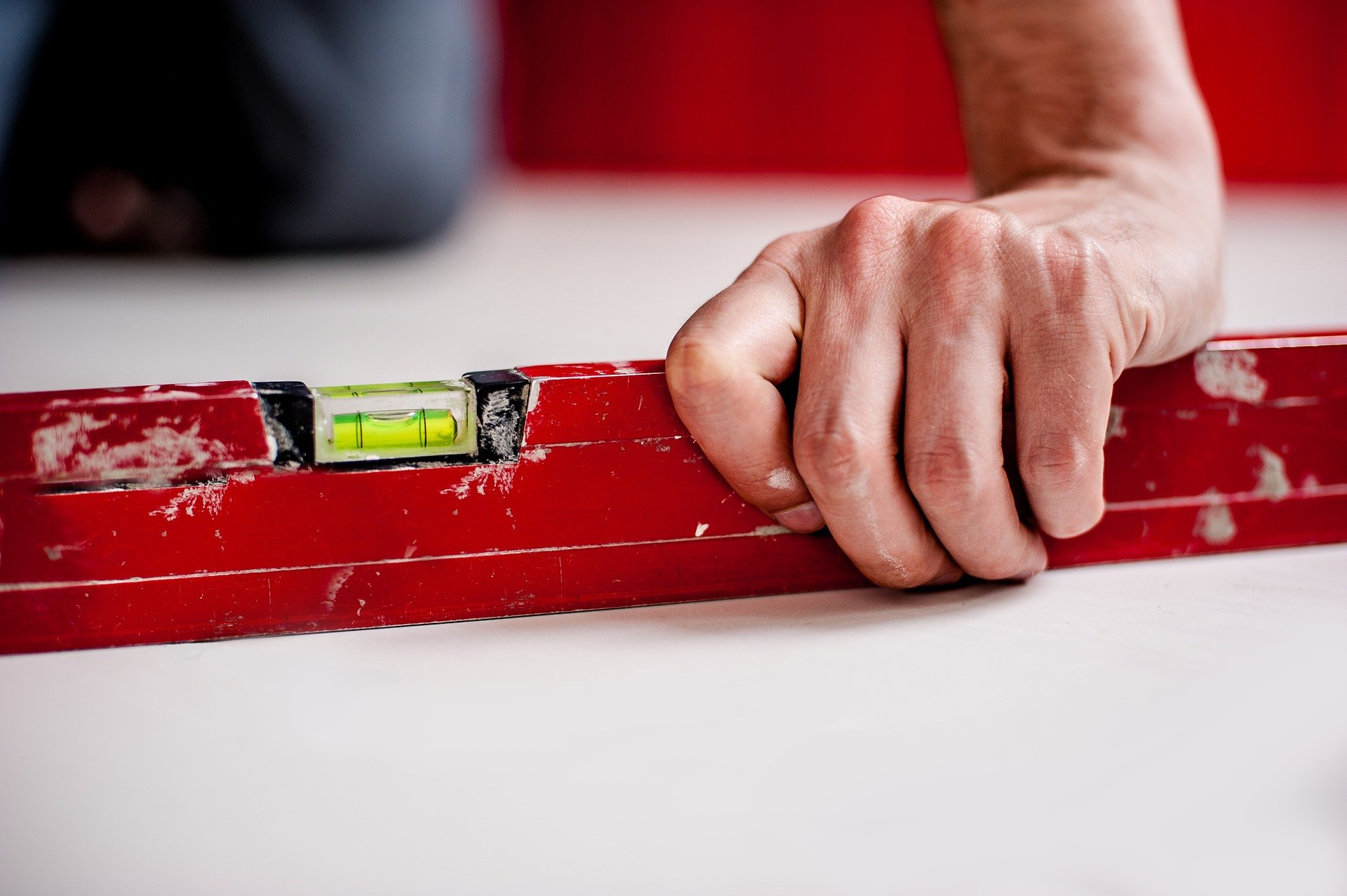
The concrete self-leveling compounds available in 2026 range from rapid-setting formulations that cure in 2 hours to extended-working-time products that remain flowable for 45 minutes. These products handle everything from small residential patches to large warehouse floors. Before starting your concrete work, you might want to check out the best drill for concrete walls for any anchoring needs.
What Makes a Concrete Self Leveler Work
A concrete self-leveler contains Portland cement, fine aggregates, and polymer modifiers that create a flowable consistency when mixed with water. The material spreads across surfaces using gravity to form level planes ranging from feather-edge thin to several inches thick. Working times vary from 10 minutes to 30 minutes depending on the formulation, with foot traffic typically possible within 2-8 hours.
The polymer content determines flow characteristics - products with 15-20% polymer content flow more readily but cost 30-40% more than standard formulations with 8-12% polymer content. Temperature affects everything: at 85°F, working time drops by approximately 25% compared to the standard 70°F baseline most manufacturers use.
Coverage calculations follow a simple formula: a 50-pound bag typically covers 25-30 square feet at 1/4 inch thickness. Double the thickness, halve the coverage. Actual coverage runs 10-15% less than manufacturer specifications due to surface irregularities and absorption.
Quick Comparison: Working Times and Depths
Understanding the key differences between products saves time and materials:
| Product | Working Time | Walkable | Max Depth | Best For |
|---|---|---|---|---|
| Quikrete Fast-Setting | 20 minutes | 2-4 hours | 1 inch | Quick turnaround projects |
| LevelQuik Extended Set | 30-45 minutes | 4-6 hours | 0.5 inch | Complex layouts needing more work time |
| Sakrete | 25 minutes | 6-8 hours | 1 inch | Standard applications with mixing pail included |
| Henry 565 | 10 minutes | 2-3 hours | 5 inches | Deep fills and severe irregularities |
| Ardex V 1200 | 10 minutes | 2-3 hours | 1.25 inches | High-strength requirements |
| LevelQuik RS | 15 minutes | 3-4 hours | 1 inch | Interior/exterior versatility |
Current Market Leaders in 2026
Here's what's currently dominating the self-leveling compound market, based on contractor survey data and sales volumes:
| Level | Product | Details |
|---|---|---|
| Up To 1 Inch | Quikrete Fast-Setting Self Leveling Floor Surfacer | 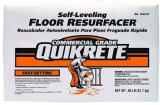 |
| Up To 1/2 Inch | Custom Building Products LevelQuik Extended Set | 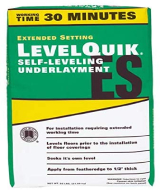 |
| Up To 1 Inch | Sakrete Self-Leveling Underlayment | 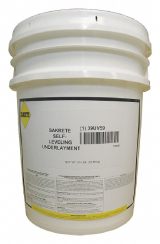 |
| Up To 5 Inches | Henry WW Company 12167 | 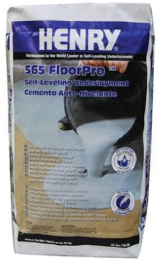 |
| Up To 1 1/4 Inches | Ardex V 1200 Self-Leveling Underlayment | 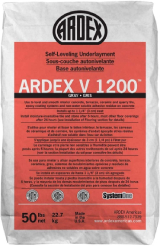 |
| Up To 1 Inch | LevelQuik Custom BLDG Products 21018 | 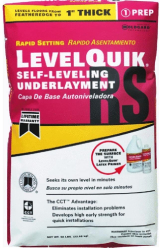 |
Product Analysis
Quikrete: Fast-Setting Self Leveling Floor Surfacer
- Working time: 20 minutes at 70°F
- Walkable: 2-4 hours
- Mix ratio: 4.5 quarts water per 50 lb bag
- Coverage: 50 sq ft at 1/8" thickness
- Maximum depth: 1 inch per application
- Compressive strength: 3,500 psi at 28 days
Quikrete's formulation uses rapid-setting calcium aluminate cement that achieves 1,500 psi compressive strength in just 24 hours - that's 43% of its final strength in one day. The 20-minute working window decreases to approximately 15 minutes at 85°F. Actual coverage runs closer to 45 square feet at 1/8 inch due to substrate absorption. The product requires mechanical mixing for 4 minutes to achieve proper consistency.
This product works over concrete, wood (with primer), ceramic tile, and VCT. The gray color blends with standard concrete. No primer required for concrete applications, but wood substrates need a bonding agent. The rapid set time means multiple batches for areas over 100 square feet. Package includes detailed mixing instructions with water temperature recommendations - cooler water extends working time by 3-5 minutes.
LevelQuik: Extended Set Self-Leveling Underlayment
- Working time: 30 minutes standard, 45 minutes with troweling
- Walkable: 4-6 hours
- Mix ratio: 5.75 quarts water per 50 lb bag
- Coverage: 50 sq ft at 1/4" thickness
- Maximum depth: 1/2 inch per application
- Compatible substrates: Wood (24" joist spacing), concrete, ceramic tile
The extended-set formula contains retarding agents that double the typical working time. This formulation works on wood subfloors with joists spaced up to 24 inches on center - wider spacing than the industry standard 16-inch requirement. The product maintains flow characteristics for 15 minutes, then enters a "healing phase" where surface corrections remain possible for another 15 minutes. This extended window reduces material waste by approximately 20% on complex layouts.
Unique among self-levelers, this product allows "re-healing" - disturbed areas can be re-smoothed by troweling within the extended working window. The formulation includes crack-isolation properties rated for gaps up to 1/8 inch. Compatible with radiant heat systems up to 140°F. The extended set chemistry means full cure takes 48 hours versus 24 hours for rapid-set products. Accepts all flooring types including moisture-sensitive wood and laminate after proper drying.
Sakrete: Self-Leveling Underlayment
- Working time: 25 minutes at 70°F
- Set time: 90 minutes
- Walkable: 6-8 hours
- Drive on time: 72 hours
- Packaging: Includes mixing pail
- Maximum depth: 1 inch per pour
The included mixing pail eliminates the need for separate containers - a detail that reduces jobsite equipment requirements by one item. Set time of 90 minutes represents initial set only; material continues curing for 28 days to reach 4,000 psi compressive strength. The 72-hour drive-on specification assumes passenger vehicles under 6,000 pounds. Temperature variations affect timing: every 10°F increase reduces working time by approximately 5 minutes.
Sakrete's formula includes anti-foaming agents that reduce air entrainment during mixing. The product accepts foot traffic at 6-8 hours but requires 24 hours before installing moisture-sensitive flooring. Works over concrete, terrazzo, ceramic tile, and properly prepared wood. The gray color matches standard concrete. Pail markings show water fill lines for partial bag mixing - useful for small patches. The polymer-modified formula resists shrinkage cracking better than straight cement products.
Henry: WW Company 12167
- Package weight: 40 pounds (vs. standard 50 lb)
- Maximum depth: 5 inches
- Walkable: 2-3 hours
- Ceramic tile installation: 6 hours
- Other flooring installation: 16 hours
- Coverage: 43 sq ft at 1/8" thickness
The 5-inch maximum depth exceeds industry standards by 400% - most compounds max out at 1 inch. This depth capability comes from reinforced polymer content and aggregate gradation that prevents shrinkage cracking. The 40-pound bag size reduces lifting weight by 20% compared to standard 50-pound bags. Wood substrate applications require Henry 564 primer for proper adhesion. The accelerated tile installation window (6 hours vs. typical 24 hours) results from rapid moisture migration characteristics.
Henry 565 FloorPro specifically addresses deep depressions and trenches without requiring multiple pours. The formulation includes specialized aggregates that prevent settlement in deep applications. Compatible with today's glue-down and floating floor systems. The product maintains dimensional stability even at maximum thickness - shrinkage measures less than 0.05%. Works from feather-edge to 5 inches in a single application, though depths over 2 inches require extended curing time before flooring installation.
Ardex: V 1200 Self-Leveling Underlayment
- Maximum depth: 1.25 inches per pour
- Compressive strength: 4,500 psi at 28 days
- Flexural strength: 1,000 psi at 28 days
- Flow time: 10 minutes
- Moisture-insensitive flooring: 6 hours
- Standard flooring: 24 hours
Ardex achieves the highest compressive strength in this comparison group - 4,500 psi exceeds typical requirements by 12%. The 10-minute flow time represents active flow period; material remains workable for approximately 5 additional minutes. Mix this product at 650+ RPM for 3 minutes using egg-beater paddles. The formulation works over ceramic, quarry tile, terrazzo, and epoxy coatings without primers - unusual versatility in the category.
The V 1200 formula includes Controlled Cure Technology that eliminates many installation problems. Zero VOC content makes it suitable for occupied spaces. The product bonds to non-water-soluble adhesive residues, saving removal labor. Initial set occurs at 30 minutes, final set at 90 minutes. The high flexural strength (1,000 psi) resists cracking under load. Packaging shelf life extends to 12 months when stored properly - 3 months longer than many competitors. Mix ratio of 5 quarts water per bag produces optimal flow without compromising strength.
LevelQuik: Custom BLDG Products 21018
- Mix ratio: 6.75 quarts water per 50 lb bag
- Maximum depth: 1 inch
- Mold/mildew resistance: Built-in biocides
- Interior/exterior rated: Yes
- Wood joist compatibility: 24 inches on center
- Compatible substrates: 8+ surface types
The mold and mildew resistance comes from antimicrobial additives that remain active throughout the product's lifespan. Exterior rating means the compound withstands freeze-thaw cycles and UV exposure - testing shows less than 2% degradation after 50 freeze-thaw cycles. The 6.75-quart water requirement represents 35% more water than typical formulations, creating higher flow rates but potentially longer drying times in humid conditions.
This product specifically lists compatibility with cement backer board, WonderBoard, sheet vinyl, and PVC flooring - surfaces that reject many self-levelers. The antimicrobial protection prevents mold growth in damp basements and crawl spaces. Accepts all flooring types after proper cure time. The formulation flows under cabinets and appliances without pumping. Higher water content means slightly lower compressive strength (3,200 psi) but better self-healing properties. Works at temperatures from 40°F to 90°F - wider range than most competitors.
Essential Equipment
Mixing Equipment Specifications
Portable Electric Paddle Mixer
- 1600 watts motor power
- 6 speed settings (150-650 RPM)
- Includes shaft and mixing blade
- Weight: 13.2 pounds
- Paddle diameter: 4.7 inches
- Shaft length: 23.6 inches
The variable speed control matters for self-leveling compounds - lower speeds (150-300 RPM) prevent air entrainment during initial wetting, while higher speeds (500-650 RPM) achieve complete mixing. The included paddle features a spiral design that lifts material from the bottom, preventing dead spots. Motor thermal protection prevents overheating during continuous mixing sessions.
- 1800 watts motor power
- Variable speed control
- Ergonomic dual handles
- Maximum mixing volume: 120 liters
- Soft start feature
- 2-year motor warranty
Higher wattage handles thicker mixes without bogging down. The soft start feature prevents material splashing when beginning mixing. Dual handles provide better control when moving the mixer through thick material. The 120-liter capacity means mixing two bags simultaneously in larger containers.
- Zinc plated steel construction
- Hex shank fits standard drills
- 5-gallon bucket compatible
- Shaft length: 16 inches
- Minimum drill requirement: 650 RPM
- Mixing diameter: 3 inches
For those with existing drills, this attachment converts any 1/2-inch chuck drill into a mixing tool. The hex shank prevents slipping under load. Zinc plating resists cement corrosion. The 16-inch shaft reaches the bottom of standard 5-gallon buckets. Requires a drill with minimum 650 RPM and 7-amp motor for proper mixing performance.
5-Gallon Reinforced Plastic Bucket
- Reinforced plastic construction
- Metal carry handle
- Volume markings at 1-gallon intervals
- Compatible with standard mixing paddles
- 90 mil thickness
- Temperature resistant to 180°F
The reinforced rim prevents cracking during aggressive mixing. Volume markings simplify water measurement for consistent mixes. The 90 mil wall thickness withstands paddle contact without flexing. Wide opening accommodates larger mixing paddles. Smooth interior surface simplifies cleaning between batches.
Environmental Factors and Performance
Temperature and humidity significantly impact self-leveling compound performance. Here's what happens at different conditions:
Temperature Effects:
- Below 50°F: Setting time doubles, flow reduces by 30%
- 50-70°F: Optimal range for manufacturer specifications
- 70-85°F: Working time reduces by 20-25%, faster initial set
- Above 85°F: Working time cuts in half, risk of flash setting
Humidity Impact:
- Below 30% RH: Rapid surface drying, potential crusting
- 30-60% RH: Ideal conditions for proper cure
- Above 60% RH: Extended drying time, 20-30% longer to accept flooring
- Above 80% RH: Risk of incomplete cure, extended moisture retention
Cold substrates below 40°F prevent proper hydration. Hot substrates above 90°F cause premature setting before proper flow. Direct sunlight on poured material creates differential curing - shaded areas cure slower than exposed sections. Wind or forced air movement accelerates surface drying, potentially creating a crust that traps moisture beneath.
Common Questions About Self-Leveling Compounds
How much area does a 50-pound bag cover? Coverage depends on thickness. At 1/8 inch: approximately 50 square feet. At 1/4 inch: approximately 25 square feet. At 1/2 inch: approximately 12.5 square feet. At 1 inch: approximately 6 square feet. Actual coverage typically runs 10-15% less due to surface texture and absorption.
What's the difference between fast-setting and extended-set formulations? Fast-setting products use accelerators that trigger rapid hydration, achieving walkable surfaces in 2-4 hours but limiting working time to 10-20 minutes. Extended-set formulations contain retarders that slow the chemical reaction, providing 30-45 minutes of working time but requiring 6-8 hours before foot traffic. The choice depends on project size and complexity.
Can self-levelers go over existing flooring? Many self-levelers bond to ceramic tile, VCT, and sealed concrete without removal. The key factor is adhesion - glossy surfaces require scarification or primers. Sheet vinyl and cushioned flooring must be removed. Cutback adhesive residue needs testing for compatibility. Some products specifically list compatibility with existing floor coverings.
How thick can these products be applied? Standard self-levelers work from feather-edge to 1 inch. The Henry 565 extends to 5 inches in a single pour. Multiple lifts can achieve greater thickness, but each layer needs to cure before the next application. Deep fills require products specifically formulated for thick applications to prevent shrinkage cracking.
Do wood floors need special preparation? Wood substrates require moisture content below 12% measured with a moisture meter. Gaps between boards need filling to prevent material loss. Most products require primer on wood for proper adhesion. Plywood needs to be exterior grade or exposure-rated. Particle board and OSB compatibility varies by product - check manufacturer specifications.
What causes self-leveling compound failures? Over-watering weakens the matrix, reducing strength by up to 50%. Under-mixing leaves dry pockets that won't cure. Dirty substrates prevent bonding. Temperature extremes affect cure chemistry. Moving air causes differential drying. Substrate moisture creates bond failure. Adding water to extend working time compromises strength. Using expired product reduces performance.
Working With Different Formulations
Fast-setting compounds achieve walkable surfaces in 2-4 hours compared to standard formulations requiring 6-8 hours. The trade-off comes in working time - fast-set products provide 10-20 minutes versus 25-45 minutes for extended-set versions. Temperature affects these times significantly: every 10°F above 70°F reduces working time by approximately 20-25%.
Polymer-modified formulations contain 12-20% polymer content compared to 5-8% in standard products. Higher polymer content increases flow characteristics and reduces shrinkage cracking. These formulations cost 30-40% more but provide better adhesion to difficult substrates like ceramic tile and sealed concrete.
Coverage varies by surface texture and porosity. Smooth, sealed concrete achieves manufacturer-stated coverage rates. Rough or porous concrete reduces coverage by 10-15%. Wood substrates with gaps between boards can reduce coverage by 20-25%. Professional installers calculate material needs using actual coverage rates rather than theoretical specifications.
Practical Considerations for Using Self-Levelers
Fast-setting compounds work best for small areas under 200 square feet where continuous pouring isn't feasible. Extended-set formulations excel in large spaces where continuous mixing and pouring operations make sense.
Mixing equipment directly impacts results. Hand mixing achieves 60% of optimal strength properties. Drill-mounted paddles reach 85% efficiency. Dedicated mixing pumps achieve 95%+ of rated strength. The investment in proper mixing equipment shows in the final results.
Common application issues follow predictable patterns. Over-watering reduces strength by up to 40%. Under-mixing leaves dry pockets that won't cure properly. Temperature extremes affect both working time and final strength. Surface contamination prevents proper bonding.
Safety equipment requirements extend beyond basic PPE. NIOSH-approved dust masks rated N95 or better protect against silica exposure. Safety glasses prevent splash injuries. Knee pads reduce fatigue during application. Chemical-resistant gloves prevent skin sensitization that affects 8% of regular users.
The economics favor bulk purchases for large projects. Buying by the pallet (40-50 bags) reduces cost by 15-20%. Storage requires dry conditions - moisture absorption ruins improperly stored material. Shelf life averages 12 months from manufacture date when stored properly.
We've covered the technical specifications, market data, and field performance of today's leading self-leveling compounds. The numbers tell the story - from working times to compressive strengths to coverage calculations that determine project costs. Whether tackling residential renovations or commercial installations, these products represent the current state of floor leveling technology in 2026.
